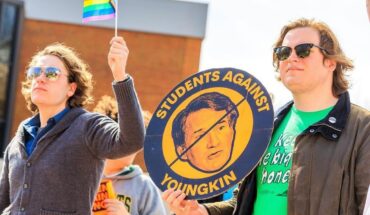How We Fight For Our Lives: A Memoir by Saeed Jones
BY: KIM BARTENFELDER, STAFF WRITER
“How We Fight for Our Lives: A Memoir” is a gripping reflection of the life of Saeed Jones, an LGBTQ+ author as well as a self-proclaimed “Bad b—-, journeyman, bon vivant, [and] poet” per his Twitter.
This memoir follows his acclaimed poetry collection “Prelude to Bruise,” the winner of both the PEN/Joyce Osterweil Award for Poetry and the Stonewall Book Award-Barbara Gittings Literature Award in 2015.
His memoir outlines more than a standard coming of age story. It discovers and uncovers the realization of self. Jones writes of the suppression of self that many before him were not allowed to share.
Identifying as a Black gay man from Tennessee, Jones delves deep into his sexual and racial identity and the relationships that become complicated as a result. Both personal and political, the memoir serves to comment, critique and allow the opportunity for readers to experience the shift in the American perspective on the LGBTQ+ community through Jones’ lens.
Part One of the memoir begins with a quote from David Mura, an interdisciplinary artist, writer and poet, that illustrates the complexities of life: “Since no one has talked to him about such feelings, he does not know what they are. And yet he is drawn to them, to the dream-like quality of doing something he has never done before, yet knowing, somehow, how to do it.”
Setting the tone for the rest of the memoir, Jones recounts the story his mother told him of a gay friend who was sick with AIDS. Jones wrote that the term “gay” was something he never imagined his mother saying. Nonetheless, “gay” blossomed something inside him that required attention.
He took to the local library to read and learn about this term that was not to be spoken or taught. Shortly after, Jones described a series of important encounters that enabled him to speak and release the silence within.
He writes that he and some neighborhood boys found some magazines. “High Society,” “Playboy” and “Hustler” permitted him to accept his attraction for men. The other boys noticed that Jones paid more attention to the magazines with men in them and proceeded to ridicule him.
Sexual scenes throughout the memoir explore how sexuality is often romanticized and how it can sometimes become violent. Jones describes an encounter that he has with a white man who racially demeans him during sex, along with an assault that he experiences in Arizona. Sexuality is, at times, reduced to casual sex, and yet Jones unpacks its intricacies and attempts to find meaning in it.
A hyper awareness of race is also a fundamental element to the memoir and Jones’ journey. It’s a common assumption that the civil rights movements of the 20th century totally cleared up racial tension in the U.S. However, Jones highlights the falsehood in this assumption and the very real consequences that Black Americans still face.
Jones also focuses on the intersectionality of his identity. the fear he experiences being both black and gay is an underlying theme. Jones discussed James Byrd Jr., a black man dragged down a road by vicious white men, and the brutal homophobia-fueled murder of Matthew Shepherd.
Jones continued with other captivating moments that pressed on his mind. He struggles with the way in which religion seems to push back against him, while also questioning at what point tolerance and acceptance are found.
Readers, through the lens of Jones’ life, are left with an understanding that the relationships built — even with oneself — are crucial to who we are.
Exceptionally written, Jones explores the duality of intimacy and further enables widespread reflection of culture, religion, history the self and more.




